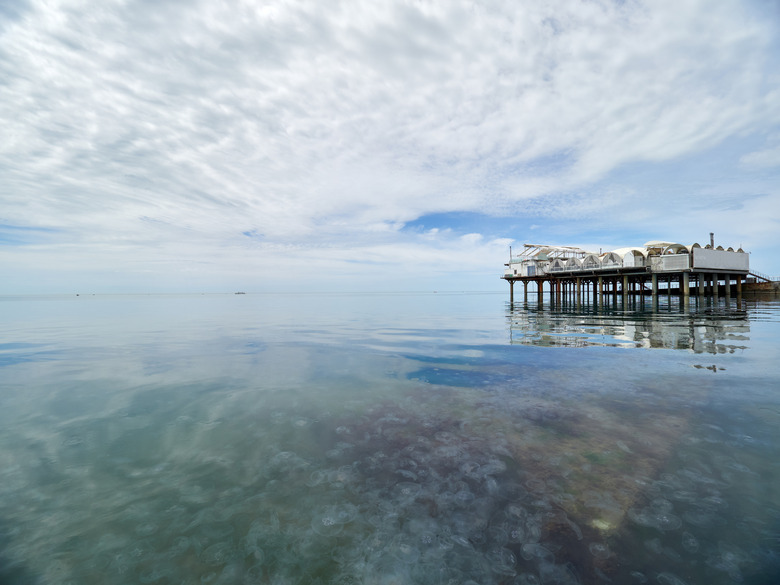An Alaskan Judge Just Reinstated An Offshore Drilling Ban – Here's Why That Matters
A ban on offshore drilling is in effect in Alaska ... again.
The first time that ban went into effect was under President Barack Obama, as part of the former leader's effort to help preserve several areas of the Arctic and Atlantic Oceans. But when President Donald Trump took over, he used an executive order to reverse that ban, opening up the areas to offshore drilling and development that has the potential to harm the surrounding ecosystem.
Last week, though, Judge Sharon L. Gleason of the United States District Court for the District of Alaska ruled that Trump's use of the executive order was "unlawful, as it exceeded the president's authority." She ordered that the ban be reinstated immediately, unless Congress – not just the president – joined together to revoke it once again.
Many legal experts are considering Judge Gleason's decision a serious blow to Trump's ongoing efforts to roll back the environmental protections set in place by his predecessors.
Who Worked to Get the Ban Back in Place?
Who Worked to Get the Ban Back in Place?
Judge Gleason's decision didn't just come out of nowhere. When President Obama first put the ban into effect, environmental groups applauded the action. After becoming the first sitting president to visit the Arctic, the ban was one of the former leader's most significant conservation moves.
The ban protected nearly 120 million Arctic acres and 31 deepwater canyons in the Atlantic, including places home to animals like polar bears, walruses, sea turtles and rare deepwater fish species. Already facing threats from climate change and pollution, those lands and the wildlife within them could further deteriorate if opened up to drilling and development. Plus, the frigid and remote waters of the Arctic are some of the most dangerous and difficult places to clean if disaster strikes in the form of an oil spill.
So when Trump overturned the ban, the same organizations that had applauded Obama's actions took the administration to court. Ten environmental groups, including Earthjustice, Sierra Club and The Wilderness Society, joined to fight to protect the lands in the Arctic and the Atlantic Ocean.
They faced opposition from defendants including Alaskan Sen. Lisa Murkowski and the American Petroleum Institute, which argued that drilling in those regions would help give consumers in the areas a greater supply of affordable energy, create jobs and strengthen national security.
Ultimately, Judge Gleason's decision came down to the way that Trump put the ban into effect. Rather than getting approval from Congress, he used an executive order, saying the ban was part of a promise to minimize the country's reliance on foreign oil and create jobs. That move overstepped his authority, ruled Judge Gleason. She threw out the order.
So What Happens Now?
So What Happens Now?
Good question. This decision has both short- and potential long-term implications that could shape environmental legal policy going forward. In the short term, the ban has been put into effect, though experts expect that the decision will be appealed in the Ninth Circuit Court of Appeals.
In the longer term, the decision is one of many setbacks the Trump administration has suffered during its attempts to roll back Obama's environmental initiatives. The administration has proposed a massive expansion of offshore drilling – as in, moving to open nearly all coastal waters to drilling.
But this recent legal blow suggests Trump might have to get more creative in his approach to gaining support for such efforts. It's going to take a lot of creativity, though, since Democrats are in control of the house, and many of those leaders have agendas that focus on pushing for environmental reform and combating the effects of climate change.
If you're one of their constituents and want to help push those agendas forward, consider contacting them today. Because even when you think the administration has made a bad move, your voice can help get that move thrown out in court.
Cite This Article
MLA
Dragani, Rachelle. "An Alaskan Judge Just Reinstated An Offshore Drilling Ban – Here's Why That Matters" sciencing.com, https://www.sciencing.com/an-alaskan-judge-just-reinstated-an-offshore-drilling-ban-heres-why-that-matters-13718215/. 3 April 2019.
APA
Dragani, Rachelle. (2019, April 3). An Alaskan Judge Just Reinstated An Offshore Drilling Ban – Here's Why That Matters. sciencing.com. Retrieved from https://www.sciencing.com/an-alaskan-judge-just-reinstated-an-offshore-drilling-ban-heres-why-that-matters-13718215/
Chicago
Dragani, Rachelle. An Alaskan Judge Just Reinstated An Offshore Drilling Ban – Here's Why That Matters last modified March 24, 2022. https://www.sciencing.com/an-alaskan-judge-just-reinstated-an-offshore-drilling-ban-heres-why-that-matters-13718215/
